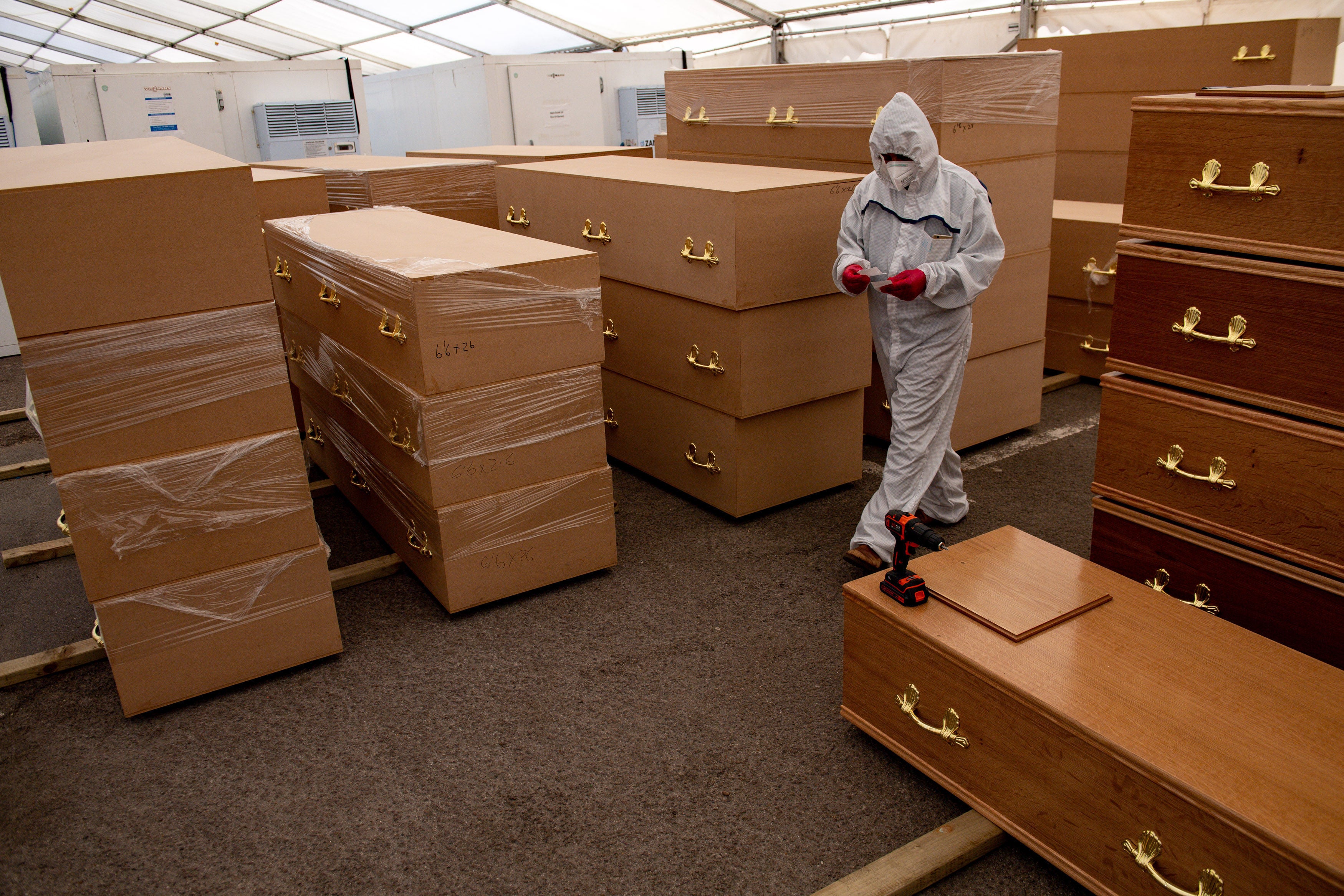The 50,000-death milestone is shocking, but we must look beyond the numbers
The news of the vaccine this week raised hopes that the end is in sight, writes Sean O’Grady – but this grim milestone is a sobering reminder of the staggering toll the pandemic has taken


Imagine walking around a graveyard with 50,000 memorial stones, each and every one memorialising a loved one taken before their time. They would surely stretch further than the eye could see. You would be struck that the great majority would be of the old, with their dates of birth from the 1950s back to the 1930s and beyond. A quarter would be 85 or more when they passed on, some of the last of the “great generation”. There would, though, also be a few tragically young deaths marked on the headstones, perhaps one in 100. Those from Bame backgrounds would be disproportionately represented, as would those from the north of England. The inscriptions might tell you just how many nurses, doctors, care workers and bus and train staff were afflicted by this modern plague. The poor would be over-represented. It is emotionally draining just to envisage such a vista, and there will be thousands more in the cemeteries before the vaccine is distributed.
Thus far, there is no actual monument to the 50,000 taken by Covid-19. We call it a “milestone”; a tombstone, more like. It is a poignant coincidence that the death toll was reached on the day that the nation remembered the Unknown Warrior and prayers were offered at his tomb. Nations need a focus for their grief.
In fact, although some still quibble, the formal figure of 50,000 lives lost is surpassed by the more realistic figure of about 70,000 “excess deaths”, an ugly term that also accounts for those who have died indirectly, because they had to wait for medical treatment during the emergency, or who were not tested positive for Covid but, in probability, still died from it in the earlier, more chaotic stages of the pandemic.
Maybe this is not an appropriate moment for blame, but it is a sobering fact that no one in any position of responsibility has yet to be made accountable for the casualties of the pandemic – the tens of thousands dead, and the many more thousands with life-changing long Covid. There have been demonstrable errors of judgement, incompetence, complacency, confusion, selfishness and hypocrisy. Time has been wasted, opportunities missed, messages bungled. No one, though, in a position of authority has lost their job, unlike the hundreds of thousands of their fellow citizens.
In a pandemic, waves of death and suffering are inevitable. Yet the words of the chief scientific adviser, Patrick Vallance, hang in the memory: “If we can get this down to numbers of 20,000 and below that is a good outcome in terms of where we hope to get to with this outbreak, but I mean it is still horrible.” That was on 17 March. By the measure of excess deaths, 100,000 would be a potential outcome before anything like normality returns.
The suspicion remains that the scale of what has befallen the UK need not have been as great if the response to the crisis had been better managed and was actually delivering a functional test and trace system, even now. In the international league table, Britain is some way better than Mexico, a little worse than France and Italy, and rather worse than South Korea. Yet that is no comfort to the families and friends who have that empty seat at the dinner table. Many of them have faced a real-life visit to the cemeteries and crematoria, and there will be many more gravestones too.
Join our commenting forum
Join thought-provoking conversations, follow other Independent readers and see their replies
Comments
Bookmark popover
Removed from bookmarks